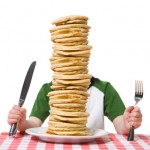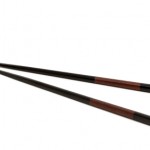I just read Brian Wansink's book, Mindless Eating: Why We Eat More Than We Think. Wansink got a PhD in Consumer Behavior from Stanford and from 2007 to 2009 was the USDA's Executive Director for Nutrition Policy and Promotion. He's currently in an Endowed Chair at Cornell and won the humorous Ig Nobel Prize in 2007.
If you've never heard of the Ig Nobel Prizes, Google the term. They started in 1991 and were originally given for discoveries "that cannot, or should not be, reproduced." They are presented by Nobel laureates in a ceremony sponsored by three Harvard groups, broadcast on NPR, on the Internet and on Science Friday the day after Thanksgiving. Some are thinly veiled criticism (BP was a co-winner in 2010 for disproving the old belief that oil and water don't mix). Most are for serious work that has a humorous slant (malaria-carrying mosquitoes are equally attracted to the smell of Camembert cheese and human feet; this led to insect traps in Africa being baited with that cheese).
In Wansink's case, his award was given in the Nutrition category for studying people's appetite for mindless eating by secretly feeding them a self-refilling bowl of soup.
His work has focused on how our environment influences our eating habits. Wansink says we all make well over 200 food choices a day (what to eat, what to drink, how much of each) and we rarely know why we make those decisions or if they are helpful/healthy choices.
For instance, one of his experiments showed using smaller plates can help you serve and eat less. Another concerned fat-free foods, which may have nearly as many calories (and sometimes more) than the standard version of the same food item. In one of his studies, normal-weight subjects given low-fat foods actually consumer one-sixth more calories and overweight subjects took in nearly 50% more calories.
Wansink says low-fat foods have a "health halo;" we think they're better for us and therefore, in a sense, give ourselves permission to eat more of them.
Container size is another of his "food trap" areas. When presented with a larger package, a larger bottle of a soda or a short, fat glass to pour a drink into, we end up eating or drinking more.
He suggests a series of food trade-offs and food policies (if I want that doughnut, I need to spend an hour walking; I'll only eat snacks when I'm sitting at the table).
I liked Wansink's books, already had been using many of his strategies, but found others I can adopt. I think his studies and concepts are valid and his ~300-page publication well worth reading.If you do so, you may find yourself using chopsticks the next time you eat Chinese food. You'll likely eat less per bite and eat slower.
I may try them for American food.


